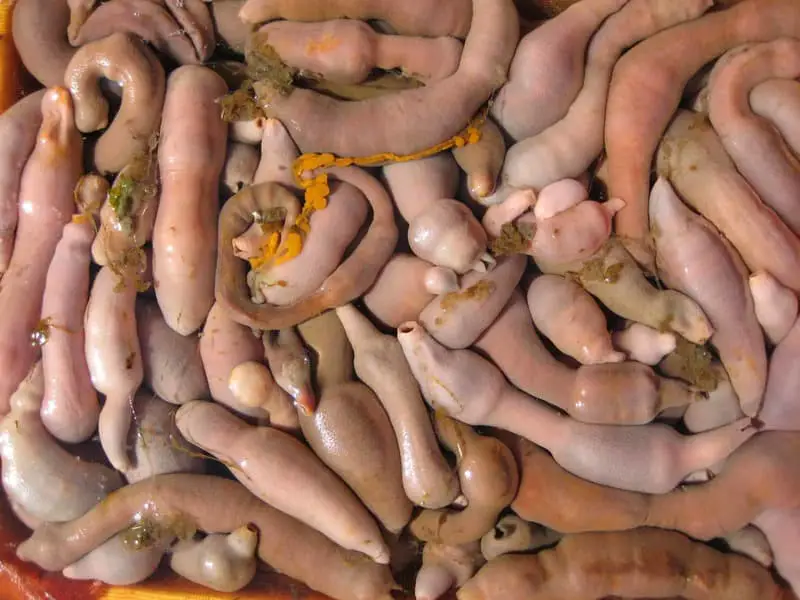When you start a taste bud discovery of what can become fascinating dishes for a modernized American palate, the world is a diversified place.
As strange as some of the dishes can be, many have profound ethnic backgrounds, some are the dishes of popular festivals and royal dinners.
I meant no offense to readers who eat this food regularly this list is just for fun because after all, food is food.
What we may think of as delicacy might be a disaster to our primate counterparts.
Why do people eat this type of food?
As we all can understand that before the grocery store concept or domestication of animals, prehistoric humans had to either farm or hunt their favorite foods.
As the scarcity of animals increased, prehistoric dishes diversified and integrated into the culture.
Some cultures changed with time, while some cultures preferred to stay with their traditional “tasty cuisine.”
Here we will list down some weird foods that people actually eat, and you may know some of them from the show, bizarre foods with Andrew Zimmern.
Take this list lightly and enjoy eating for a foodie adventure, Bon appétit!
These are the top 10 gross foods around the world:
10. Cockroach Soup
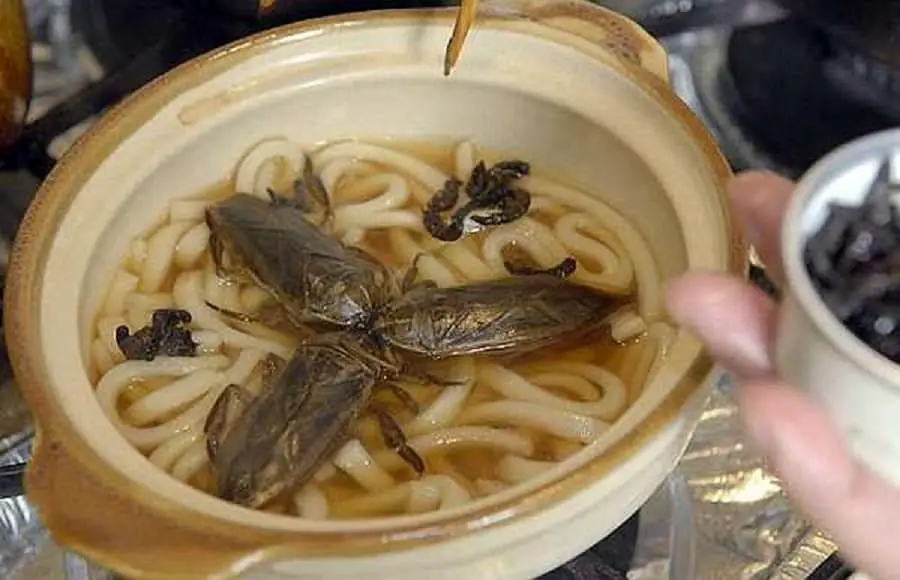
Finding a cockroach even nearby your takeaway meal might make you furious, let alone find it in your food.
Cockroach soup, although seemingly repulsive, has surprisingly found its way into the palates of some individuals. While stumbling upon a cockroach in your food may ruin your appetite, some people actually consider it a healthy addition to their soup.
Where Can You Find It?
Cockroach soup is most commonly consumed in countries such as Madagascar, various Southeast Asian countries, and China.
What Does It Taste Like?
This unique delicacy leaves behind a distinctive mild flavor that is hard to describe. In terms of texture, you might experience a crispiness similar to deep-fried burnt French fries if consumed immediately.
9. Head cheese
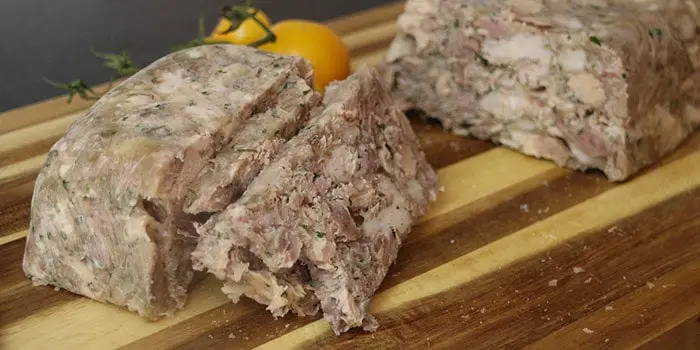
During the Middle Ages, peasants often had to make do with leftover meat scraps for their meals. When faced with the head of a goat, sheep, or pig, they turned it into head cheese, which is not an actual cheese but rather a “food soup” made from undesirable parts of the animal, including the face and sometimes even the feet.
Where Can You Find It?
Head cheese, a dish that originated in Europe, can be found practically everywhere. If you have access to a local meat grocery store, you can even try making it yourself, although it is worth mentioning that very few people consume it in modern times.
What Does It Taste Like?
The taste of head cheese varies depending on the specific parts used. Overall, it carries a strong, cattle-like aroma and flavor.
8. Cod Milt or Cod sperm sacs
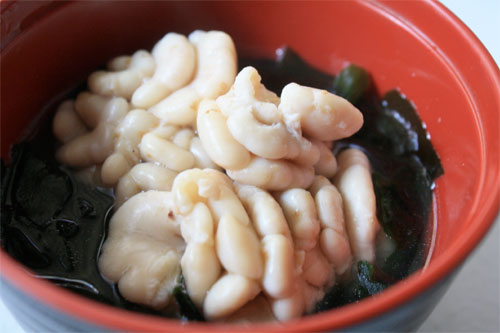
Cod milt, also known as cod sperm sacs or ‘shirako’ in Japanese, may appear daunting and uncomfortable at first glance, but in Japan, this reproductive organ is highly regarded as a cherished delicacy. While the peculiar appearance of milt might deter some adventurous eaters, those who dare to try it will be rewarded with a unique culinary experience.
Where Can You Find It?
Cod milt is predominantly consumed in Japan and other East Asian countries.
What Does It Taste Like?
Cod milt has a buttery, custard-like texture and a subtle sweetness that lingers on the palate.
7. Rat meat

Rat meat is one of the gross foods that is a dietary foodstuff in others, while prohibited in some societies.
Taboos include concerns about a disease or spiritual prohibition, but in many locations, people have incorporated this disgusting food into local diets.
This one is interesting:
If you’re not satisfied with eating rats, why not try eating after rat leftovers?
In India, there is a rat temple of Karni Devi, and people from all over the world go to meet millions of living pet rats, believed to be adored ones’ reincarnations.
Worshippers believe that the rats in the property are the goddess to whom they devote the temple.
Before entering the temple, people have to take off their shoes and carry some milk or baked goods for sharing with the rats.
It’s believed as a blessing from the goddess herself if a rat eats alongside worshippers.
And don’t dare to harm any of these creatures because the temple has its punishment for harming them.
Ironically, the workers and all who lived around the temple survived the Black Plague, and to date, there are no recorded cases of humans contracting a disease from the temple rats.
Hindus believe that their rodent dwellers have protected their property against alien rats carrying lethal fleas.
Must visit once.
Where you may find rat meat?
China, North Korea, and Southeast Asia
How does it taste?
People who have tried it say it tastes like chicken
6. Pacific Geoduck
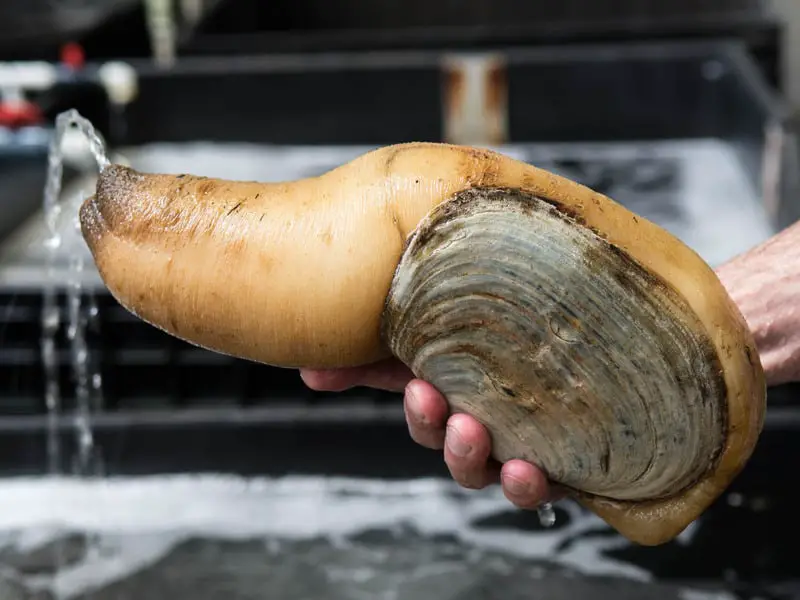
Geoducks, weird creatures found at the bottom of deep ocean waters, burrow in the sand and extend their bodies like trees to access their food source.
None of this is particularly odd, and I’m aware geoducks have a great flavor, but they’re just about something.
While geoducks are renowned for their excellent flavor (According to who eat it), their appearance and the term “gooey duck” might not initially appeal to everyone.
Or perhaps it’s the fact that they look like they should be censored by a big black box.
It may look somewhat familiar to some naughty minds.
Nevertheless, their culinary appeal remains unmatched.
Where Can You Find It?
Pacific geoduck is particularly prevalent in East Asian and Pacific cuisine.
What Does It Taste Like?
Pacific geoduck has a taste akin to a raw clam, with a salty and oceanic flavor.
5. Hákarl, fermented shark
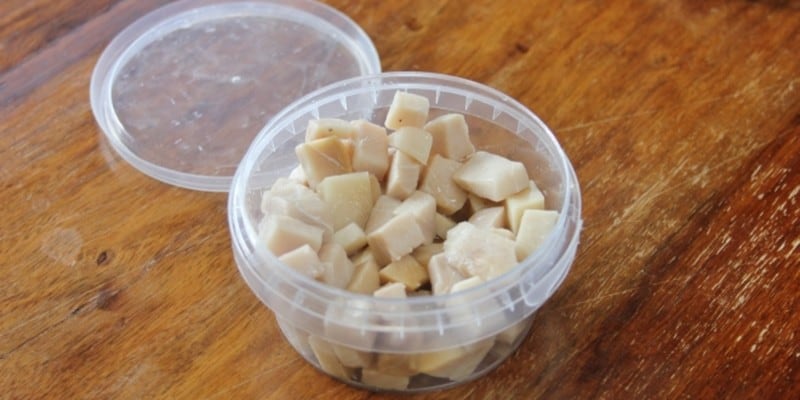
Hákarl, the most notorious food you will encounter in the Arctic, begins its preparation with a poisonous shark. After undergoing a special fermentation process and being hung to dry for four to five months, the shark is transformed into hákarl. The pungent ammonia smell that accompanies this dish often elicits strong reactions from first-timers.
Where Can You Find It?
Hákarl is a traditional Icelandic dish.
What Does It Taste Like?
Hákarl’s distinct flavor is attributed to the shark’s natural acids. The soft yellow hákarl from the shark’s flesh resembles cheese in texture, while the yellowish stomach meat offers a chewier experience. Taste perceptions range from fishy and gentle to the strong pungency of blue cheese.
4. Casu Marzu
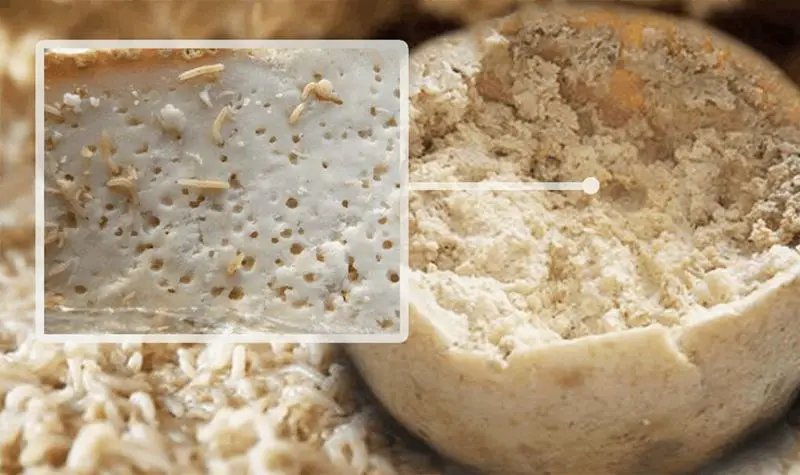
Casu marzu, a unique Sardinian cheese made from goat’s milk, is often referred to as maggot cheese. What sets this dish apart is the preparation method, which involves introducing fly eggs into the cheese during the fermentation process. The hatched maggots consume the cheese, imparting it a distinctive flavor that some find surprisingly delightful. While many prefer to remove the maggots before consumption, some daring individuals believe that the larvae add an extra punch to the taste.
Where Can You Find It?
Casu marzu is primarily found in Italy and certain regions of France.
What Does It Taste Like?
Casu marzu possesses a flavor reminiscent of strong blue cheese like Gorgonzola, with a slightly pungent taste.
3. Balut
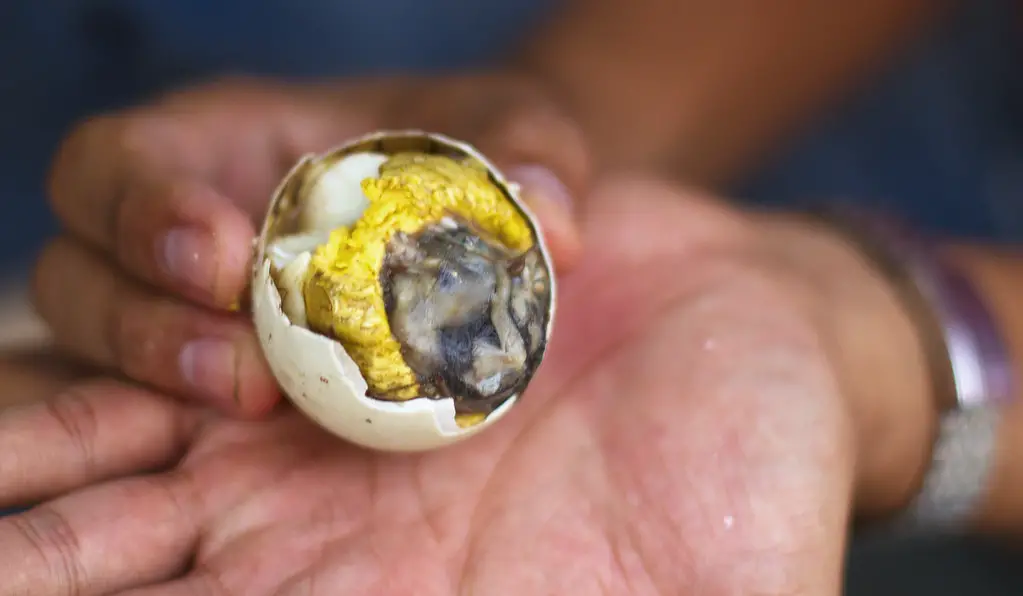
If someone presents balut on your tray, you might believe that a hard-boiled egg is served.
At first glance, balut may resemble a hard-boiled egg, but upon cracking it open, you will discover an intact duck embryo inside.
Balut is a popular street food delicacy in several Southeast Asian countries.
The eggs are carefully selected after approximately eight days of incubation, ensuring that the embryo is at the right stage of development.
These cooked eggs are typically served with a dash of salt and a squeeze of lemon juice.
Where Can You Find It?
Balut can be found in various Southeast Asian countries.
What Does Balut Taste Like?
A well-prepared balut offers a milder flavor profile, and the texture of the embryo is nothing to fear.
2. Gaebul (Live Spoon Worms)
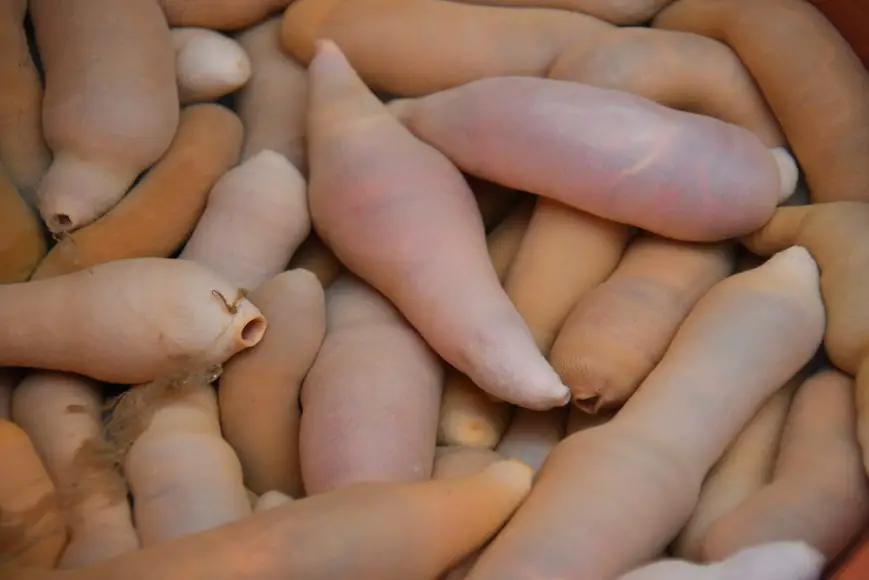
Whether cooked or raw, I mention it, Koreans enjoy their seafood and live.
Spoonworms (Gaebul) are a type of marine animal that is very commonly found in Soth Korean fish markets.
Together with its supposed “turn-on” characteristics, the odd-shaped presence of spoon worms gained them the nickname of “penis fish.”
Usually consumed raw and live, Gaebul is generally sliced into bits bite-size that keeps turning around on the tray before popping into our mouth.
Do you never know what else is there in this crazy world?
Where Can You Find It?
Gaebul is primarily found in Korea.
What Does It Taste Like?
It tastes like chewy saltwater (To be clear, I never tried this dish and not considering tasting it).
1. Virgin Boy Eggs
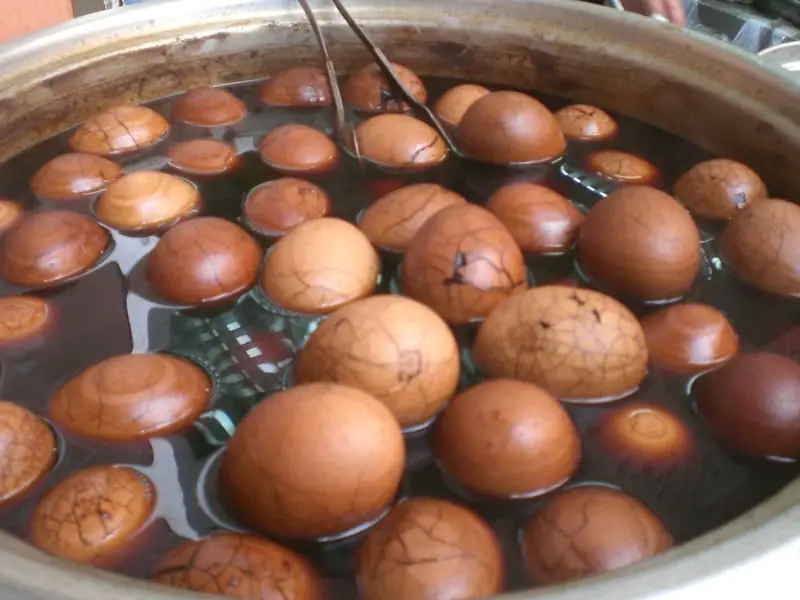
Despite its controversial name, virgin boy eggs simply refer to real eggs.
By eggs, I mean real eggs.
In Dongyang, China, regular chicken or duck eggs are soaked in the urine of boys under the age of ten.
Egg makers gather urine from primary school volunteer kids. Locals are willing to pay twice for these bad guys with the notion that these eggs are great for body circulation.
We can only imagine what disgusting gross foods are waiting for you on the other side of the globe.
Be ready to stand for them–they charge about twice the price of an ordinary egg.
This is also a way for young boys to ‘piss off’ adults.
Where Can You Find It?
Virgin boy eggs are a specialty of Dongyang, China.
How does it taste?
People who have tried it mention a salty-sour taste.
Please note that the consumption of these unusual foods is subject to personal preference and cultural practices. It’s essential to be aware of local customs and regulations when trying unfamiliar dishes.
these ten foods may seem bizarre and unappetizing to some, but they hold significant cultural significance and intrigue for adventurous eaters. Exploring the culinary world allows us to appreciate the diversity of flavors and traditions that exist across different societies. So, if you’re ever feeling daring, consider trying one of these peculiar delicacies during your travels!”
Did you like our top 10 gross foods list make sure to let us know in the comments below.
Don’t forget to share this with your friends on social media.
